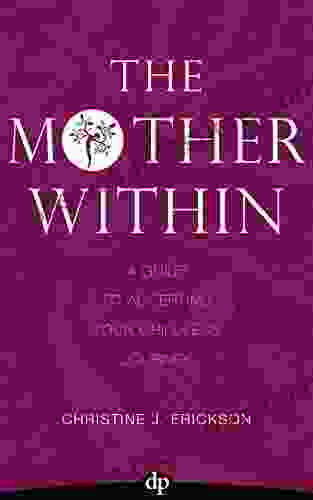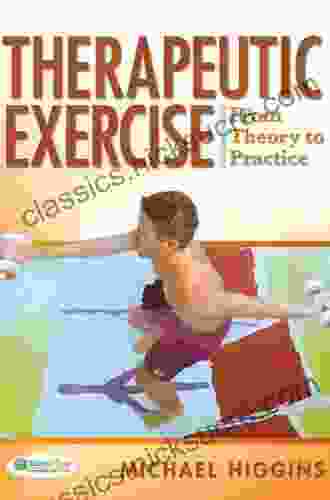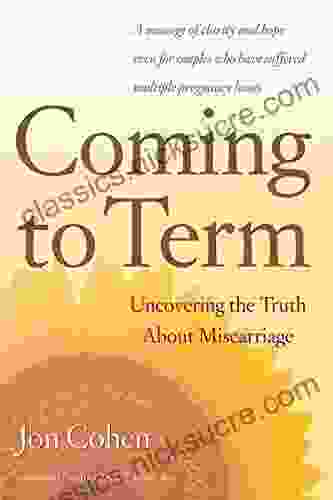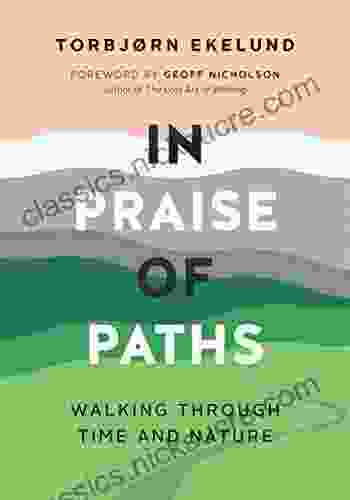Therapeutic Exercise From Theory to Practice: An In-Depth Guide to Evidence-Based Rehabilitation

Therapeutic exercise is an integral component of comprehensive rehabilitation, helping individuals regain function, reduce pain, and improve their overall quality of life. By engaging in targeted physical activities, patients can enhance their range of motion, strengthen their muscles, and restore their physical abilities. This guide provides an in-depth exploration of the principles, methods, and evidence-based practices of therapeutic exercise, empowering healthcare professionals and individuals with the knowledge and skills to optimize patient outcomes.
4.6 out of 5
| Language | : | English |
| File size | : | 297214 KB |
| Screen Reader | : | Supported |
| Print length | : | 800 pages |
Principles of Therapeutic Exercise
- Individualized Approach: Therapeutic exercise programs are tailored to the specific needs and goals of each patient, considering their age, condition, and functional limitations.
- Progressive Overload: Exercises are gradually increased in intensity and duration over time to challenge the patient and elicit physiological adaptations.
- Specificity: Exercises are selected to target specific muscle groups or movements that are relevant to the patient's condition and functional goals.
- Neuromuscular Control: Therapeutic exercise incorporates exercises that improve coordination, balance, and proprioception, enhancing the patient's ability to perform everyday tasks safely and efficiently.
- Functional Integration: Exercises are designed to translate into functional movements that the patient can apply in their daily lives, such as walking, climbing stairs, or performing work-related tasks.
Methods of Therapeutic Exercise
There is a wide range of therapeutic exercise methods, each with its own specific benefits and applications. Common methods include:
- Active Exercise: Patients actively perform exercises against resistance, using their own muscles to generate movement.
- Passive Exercise: A healthcare professional or assistive device moves the patient's affected limb or joint through its range of motion.
- Resisted Exercise: Patients exert force against a resistance, such as weights, bands, or manual resistance from a healthcare professional.
- Balance Exercises: Exercises designed to improve stability, coordination, and proprioception, reducing the risk of falls and improving overall functional capacity.
- Stretching: Exercises that increase the flexibility of muscles, tendons, and ligaments, improving range of motion and reducing stiffness.
Evidence-Based Practice in Therapeutic Exercise
Therapeutic exercise interventions are guided by a growing body of scientific evidence. Evidence-based practice ensures that healthcare professionals utilize the most effective and up-to-date approaches to optimize patient outcomes. Key principles of evidence-based practice in therapeutic exercise include:
- Systematic Review of Literature: Healthcare professionals critically evaluate and synthesize the latest research findings to identify the most effective interventions.
- Use of Clinical Guidelines: Adherence to evidence-based clinical guidelines ensures that patients receive standardized, high-quality care.
- Outcome Measurement: Regular assessment of patient outcomes using standardized measures allows healthcare professionals to monitor progress and adjust treatment plans accordingly.
- Patient Education and Empowerment: Patients are actively involved in their own rehabilitation, understanding the rationale behind their exercises and taking ownership of their recovery process.
Benefits of Therapeutic Exercise
The benefits of therapeutic exercise extend beyond physical rehabilitation, positively impacting various aspects of an individual's life.
- Pain Reduction: Exercise can alleviate pain by reducing inflammation, improving circulation, and strengthening muscles that support joints and tissues.
- Improved Range of Motion: Stretching and strengthening exercises increase flexibility and joint mobility, allowing for greater freedom of movement.
- Increased Strength and Endurance: Resisted exercises build muscle strength and endurance, empowering individuals to perform daily tasks with less effort and fatigue.
- Enhanced Balance and Coordination: Balance exercises improve stability, reducing the risk of falls and improving overall functional capacity.
- Reduced Risk of Chronic Conditions: Regular exercise can help prevent or manage chronic conditions such as heart disease, stroke, and diabetes.
- Improved Quality of Life: Therapeutic exercise can enhance mood, reduce stress, and boost energy levels, contributing to overall well-being and quality of life.
Applications of Therapeutic Exercise
Therapeutic exercise finds applications in a wide range of conditions, including:
- Orthopedic Conditions: Rehabilitation after surgeries, injuries, and chronic conditions such as arthritis and osteoporosis.
- Neurological Conditions: Stroke, traumatic brain injury, Parkinson's disease, and multiple sclerosis.
- Cardiopulmonary Conditions: Heart failure, chronic obstructive pulmonary disease, and asthma.
- Geriatric Conditions: Sarcopenia, falls prevention, and functional decline.
- Injury Prevention: Strengthening exercises can help prevent injuries in athletes and individuals performing physically demanding tasks.
Therapeutic exercise is a powerful tool that can dramatically improve the lives of individuals with various conditions and functional limitations. By understanding the principles, methods, and evidence-based practices of therapeutic exercise, healthcare professionals and individuals can optimize rehabilitation outcomes and empower patients to regain function, improve their quality of life, and achieve their full potential.
4.6 out of 5
| Language | : | English |
| File size | : | 297214 KB |
| Screen Reader | : | Supported |
| Print length | : | 800 pages |
Do you want to contribute by writing guest posts on this blog?
Please contact us and send us a resume of previous articles that you have written.
 Fiction
Fiction Non Fiction
Non Fiction Romance
Romance Mystery
Mystery Thriller
Thriller SciFi
SciFi Fantasy
Fantasy Horror
Horror Biography
Biography Selfhelp
Selfhelp Business
Business History
History Classics
Classics Poetry
Poetry Childrens
Childrens Young Adult
Young Adult Educational
Educational Cooking
Cooking Travel
Travel Lifestyle
Lifestyle Spirituality
Spirituality Health
Health Fitness
Fitness Technology
Technology Science
Science Arts
Arts Crafts
Crafts DIY
DIY Gardening
Gardening Petcare
Petcare Jamie D Roberts Lmft
Jamie D Roberts Lmft Herb Payson
Herb Payson Maxine Van Evera Lupo
Maxine Van Evera Lupo Casey Mcquiston
Casey Mcquiston Bradley Wiggins
Bradley Wiggins Anne Arthur
Anne Arthur David Mcgowan
David Mcgowan Saul Greenberg
Saul Greenberg Melinda Sharma
Melinda Sharma Micheal J Murphy
Micheal J Murphy Thomas Celentano
Thomas Celentano Brandon Sieh
Brandon Sieh Greg Jacobs
Greg Jacobs Jody Studdard
Jody Studdard New Scientist
New Scientist Annie Vernon
Annie Vernon Bruce Bryans
Bruce Bryans W Ben Hunt
W Ben Hunt David Hume
David Hume Kerry Andy Ph D
Kerry Andy Ph D Johnson Smith
Johnson Smith Robert Kaplinsky
Robert Kaplinsky Richard Allen
Richard Allen Hans Florine
Hans Florine Kim Hutchinson
Kim Hutchinson Brian J Sorrells
Brian J Sorrells Lynn Marriott
Lynn Marriott Whitney Stewart
Whitney Stewart Traci B Fox
Traci B Fox John U Bacon
John U Bacon Jamie Thom
Jamie Thom Stanley H Block
Stanley H Block Kevin Keitoshi Casey
Kevin Keitoshi Casey Marv Wolfman
Marv Wolfman John Allen Paulos
John Allen Paulos Annie Boochever
Annie Boochever Lee Carroll
Lee Carroll Jake Byrne
Jake Byrne Anne Garrels
Anne Garrels Lamar Underwood
Lamar Underwood Companion Works
Companion Works Stephen Rodrick
Stephen Rodrick Julie Schoen
Julie Schoen Annemarie Brear
Annemarie Brear Neva Sullaway
Neva Sullaway Kristi Hugstad
Kristi Hugstad Margaret Bemister
Margaret Bemister Anne Griffin Perry
Anne Griffin Perry Martin Lees
Martin Lees Christo Obreschkow
Christo Obreschkow Hiro Fujiwara
Hiro Fujiwara Frank Burtnett
Frank Burtnett Patrick Leigh Fermor
Patrick Leigh Fermor Russ King
Russ King Victoria Biggs
Victoria Biggs Thor Heyerdahl
Thor Heyerdahl Mark Murphy
Mark Murphy Peter C Earle
Peter C Earle Timothy Egan
Timothy Egan Christine Gross Loh
Christine Gross Loh Dr Julie Shannon
Dr Julie Shannon Eric Stice
Eric Stice Graham Poll
Graham Poll Jennifer Berne
Jennifer Berne Teri Halstead Rn Msn
Teri Halstead Rn Msn Shanna Swendson
Shanna Swendson Allistair Mccaw
Allistair Mccaw Tom Hull
Tom Hull Rick August
Rick August Kindle Edition
Kindle Edition Christopher Van Tilburg
Christopher Van Tilburg Merlisa Lawrence Corbett
Merlisa Lawrence Corbett Cindy Pawlcyn
Cindy Pawlcyn David M Carballo
David M Carballo William Rathje
William Rathje Isee Exam Preparation Experts
Isee Exam Preparation Experts Gareth James
Gareth James Patrick Mansell
Patrick Mansell Lucy Sutcliffe
Lucy Sutcliffe Sarah Beeson
Sarah Beeson Johnny Chuong
Johnny Chuong Claire Fraise
Claire Fraise Marcus Engel
Marcus Engel Srinivasan S Pillay
Srinivasan S Pillay Bert Randolph Sugar
Bert Randolph Sugar David H Stern
David H Stern Babette A Brumback
Babette A Brumback Douglas Boze
Douglas Boze Shaun Gallagher
Shaun Gallagher Kate Jones
Kate Jones Ralph Henry Barbour
Ralph Henry Barbour Henry Stedman
Henry Stedman Henry Malone
Henry Malone C G Yeager
C G Yeager Stephen White
Stephen White Gary Genard
Gary Genard John Snygg
John Snygg T K Richardson
T K Richardson Leo Furcht
Leo Furcht Simon Gawesworth
Simon Gawesworth Erika Larkin
Erika Larkin Laura Hillenbrand
Laura Hillenbrand David Hart
David Hart Critical Role
Critical Role Ernest Nagel
Ernest Nagel Jack Petrash
Jack Petrash Steve Currier
Steve Currier Rick Brinkman
Rick Brinkman Anneli Williams
Anneli Williams Tomohito Oda
Tomohito Oda Danya Ruttenberg
Danya Ruttenberg Dave Bosanko
Dave Bosanko Joseph Mctaggart
Joseph Mctaggart Kelly St Clare
Kelly St Clare Ted Starkey
Ted Starkey La Leche League International
La Leche League International Sabrina Sargent
Sabrina Sargent Christopher Paolini
Christopher Paolini Paul H Wender
Paul H Wender Susan Ee
Susan Ee David Lindley
David Lindley Matt Bronsil
Matt Bronsil Monica Seles
Monica Seles Audiolearn Content Team
Audiolearn Content Team Trina Boice
Trina Boice Don Cherry
Don Cherry Michael A Stackpole
Michael A Stackpole Wilfred Cude
Wilfred Cude Steve Schwartz
Steve Schwartz Nicholas Johnson
Nicholas Johnson Jackson Carter
Jackson Carter Kj Dell Antonia
Kj Dell Antonia The Tutorverse
The Tutorverse Notesbo Funny
Notesbo Funny Filipe Masetti Leite
Filipe Masetti Leite Annie Thoms
Annie Thoms Tom Clynes
Tom Clynes David Hoffbrand
David Hoffbrand Sara Bennett
Sara Bennett Rina Mae Acosta
Rina Mae Acosta Jack Thurston
Jack Thurston Ken Bain
Ken Bain Zohar Ben Shoham
Zohar Ben Shoham Florence Littauer
Florence Littauer Richmond Campbell
Richmond Campbell Elizabeth Pantley
Elizabeth Pantley Susan H Kamei
Susan H Kamei Creek Stewart
Creek Stewart Raye Wagner
Raye Wagner Julia Cook
Julia Cook Anne Blythe
Anne Blythe Patty Bear
Patty Bear Ronald W Kipp
Ronald W Kipp John R Anderson
John R Anderson Geoff Greig
Geoff Greig Derek C Hutchinson
Derek C Hutchinson Shannon Allen
Shannon Allen Julian Winters
Julian Winters William A Richards
William A Richards Annie Brock
Annie Brock Jak Beardsworth
Jak Beardsworth Ross W Greene
Ross W Greene Jessica Megan Larson
Jessica Megan Larson Joel Gunderson
Joel Gunderson Daniel L Bray
Daniel L Bray Vanessa Van Edwards
Vanessa Van Edwards David Foster Wallace
David Foster Wallace David Cayley
David Cayley Wayne L Winston
Wayne L Winston Luke Amadeus Ranieri
Luke Amadeus Ranieri Lena Empyema
Lena Empyema Paul Wilbur
Paul Wilbur Lynn Painter
Lynn Painter Wiley Mccrary
Wiley Mccrary Lorne Rubenstein
Lorne Rubenstein Laura Warren Hill
Laura Warren Hill K Loraine
K Loraine Kathryn Aalto
Kathryn Aalto Sir Francis Chichester
Sir Francis Chichester Sarah Luddington
Sarah Luddington Lucie Hemmen
Lucie Hemmen David G Mcafee
David G Mcafee Julian Thomas
Julian Thomas Judy Arnall
Judy Arnall Stephen Kendrick
Stephen Kendrick Claire Legrand
Claire Legrand Daniel Barbarisi
Daniel Barbarisi Yury Kronn
Yury Kronn Douglas R Dechow
Douglas R Dechow Kathryn Cadenhead Colgrove
Kathryn Cadenhead Colgrove Vincent J Monastra
Vincent J Monastra Rory D Nelson
Rory D Nelson Kimberly D Coleman
Kimberly D Coleman Herbert Dorsey
Herbert Dorsey Michael Wombacher
Michael Wombacher Sean Moloney
Sean Moloney Ascencia Pharmacy Technician Exam Prep Team
Ascencia Pharmacy Technician Exam Prep Team Glen Simmons
Glen Simmons Carter G Walker
Carter G Walker Michael Lieberman
Michael Lieberman Margaret L Lial
Margaret L Lial Jaron Lanier
Jaron Lanier Doug Knutson
Doug Knutson R I Chalmers
R I Chalmers Helena Hjalmarsson
Helena Hjalmarsson Julie Hall
Julie Hall Beth Jacobs Phd
Beth Jacobs Phd Ashild Kolas
Ashild Kolas John Powers
John Powers Skeleton Steve
Skeleton Steve Norm Zeigler
Norm Zeigler Jean Liedloff
Jean Liedloff Dave Heller
Dave Heller Ben Alexander
Ben Alexander Ruth Ravid
Ruth Ravid David Sheff
David Sheff Jacqueline Boyle
Jacqueline Boyle Richard Watts
Richard Watts Shyam Bharath S D
Shyam Bharath S D Michael Volkmar
Michael Volkmar Ryan T White
Ryan T White Kristina Kuzmic
Kristina Kuzmic Chad Noreuil
Chad Noreuil Roger Eckstine
Roger Eckstine Deborah Ellis
Deborah Ellis C Rich
C Rich Kay West
Kay West Caroline D Greene
Caroline D Greene Matilda Joslyn Gage
Matilda Joslyn Gage Marlo Thomas
Marlo Thomas Anthony E Wolf
Anthony E Wolf Desmond Morris
Desmond Morris Frost Kay
Frost Kay Chella Quint
Chella Quint Melinda Cooper
Melinda Cooper Anthea Sharp
Anthea Sharp Ric K Hill
Ric K Hill Barry Meadow
Barry Meadow Justin J Lehmiller
Justin J Lehmiller Aarron Davis
Aarron Davis Jacob Erez
Jacob Erez Janet Lansbury
Janet Lansbury Sheril Kirshenbaum
Sheril Kirshenbaum Jean Watson
Jean Watson Bill Plotkin
Bill Plotkin Barney Scout Mann
Barney Scout Mann David C M Dickson
David C M Dickson Jackie Bolen
Jackie Bolen Tim Hill
Tim Hill Giovanni Bennardo
Giovanni Bennardo Theodore M Porter
Theodore M Porter Vic Widman
Vic Widman David W Shaw
David W Shaw Gareth Ainsworth
Gareth Ainsworth Zenas Leonard
Zenas Leonard Olly Postanin
Olly Postanin Glenn Adamson
Glenn Adamson Marcia L London
Marcia L London Spencer Langley
Spencer Langley Thomas Settimi
Thomas Settimi Tella Olayeri
Tella Olayeri Tony Nester
Tony Nester Christopher F Chabris
Christopher F Chabris Bernard Ollivier
Bernard Ollivier Heather Atkinson
Heather Atkinson Anne Crossman
Anne Crossman Peter Lipton
Peter Lipton Jim Zub
Jim Zub John Michael Greer
John Michael Greer Dan John
Dan John Steven Harrison
Steven Harrison Jeffrey Rubin
Jeffrey Rubin Pedro J Izquierdo
Pedro J Izquierdo Lorraine Evans
Lorraine Evans Rabbi Jason Sobel
Rabbi Jason Sobel Michael Bernick
Michael Bernick Jamie Davis
Jamie Davis Steven M Rice
Steven M Rice Edward Espe Brown
Edward Espe Brown Kristen Welch
Kristen Welch Benjamin Wiker
Benjamin Wiker Eric J Mash
Eric J Mash Marilynn Hughes
Marilynn Hughes Katie Hewett
Katie Hewett Billy Hansen
Billy Hansen Jerry A Pattengale
Jerry A Pattengale Svetlana Boym
Svetlana Boym Bianca Scardoni
Bianca Scardoni Michelle Obama
Michelle Obama Gerald Marzorati
Gerald Marzorati Fazale Rana
Fazale Rana Darren Levine
Darren Levine Annette Dixon
Annette Dixon Tarl Warwick
Tarl Warwick Francis French
Francis French Del Hungerford
Del Hungerford R Michael Shaft
R Michael Shaft Richard Preston
Richard Preston Marcia Nathai Balkissoon
Marcia Nathai Balkissoon Susan Dexter
Susan Dexter Thema Bryant Davis
Thema Bryant Davis Kathleen Kirkland
Kathleen Kirkland Anne Lamott
Anne Lamott L J Smith
L J Smith Tim Sullivan
Tim Sullivan Steve Mcmichael
Steve Mcmichael Lisa Delmedico Harris
Lisa Delmedico Harris Eduardo Kohn
Eduardo Kohn Henry Treece
Henry Treece Jean Markale
Jean Markale Michael Howard
Michael Howard Francheska Fifield
Francheska Fifield Bobby Bowden
Bobby Bowden Jennifer Raff
Jennifer Raff New England Wild Flower Society
New England Wild Flower Society Steve Mchugh
Steve Mchugh Supersummary
Supersummary Md Nazaneen Homaifar
Md Nazaneen Homaifar Anthony Edwards
Anthony Edwards P G Wodehouse
P G Wodehouse Reia
Reia Randy Ribay
Randy Ribay Harvey Karp
Harvey Karp Colm Cooper
Colm Cooper Gail Fay
Gail Fay Al Beatty
Al Beatty Ted Leeson
Ted Leeson Meg Meeker
Meg Meeker Barbara Savage
Barbara Savage Courtney Mayer
Courtney Mayer Shing Yin Khor
Shing Yin Khor Lexie Williamson
Lexie Williamson Mana Takahashi
Mana Takahashi Chuck Tingle
Chuck Tingle Magoosh
Magoosh Colleen Macklin
Colleen Macklin Gabrielle Walker
Gabrielle Walker Judy Corry
Judy Corry Dr Harrison Sachs
Dr Harrison Sachs Dustin Brady
Dustin Brady Aw Schultz
Aw Schultz Robert Weintraub
Robert Weintraub Carl Hiaasen
Carl Hiaasen Kass Morgan
Kass Morgan Joe Borelli
Joe Borelli Jon Cohen
Jon Cohen Julian Savulescu
Julian Savulescu Richard Sale
Richard Sale Bryan Greetham
Bryan Greetham Kathleen M Galvin
Kathleen M Galvin Cylin Busby
Cylin Busby Peter Turchin
Peter Turchin Nat Brown
Nat Brown Joshua M Powell
Joshua M Powell Tim Grollimund
Tim Grollimund David Norrie
David Norrie Peter Grey
Peter Grey Jeffrey E F Friedl
Jeffrey E F Friedl I Randolph Daniel
I Randolph Daniel Johnny Weir
Johnny Weir Zoeunlimited
Zoeunlimited T Edward Nickens
T Edward Nickens Jolene Stockman
Jolene Stockman Rachel Macy Stafford
Rachel Macy Stafford Richard Evans
Richard Evans Jd Long
Jd Long Jo Wimpenny
Jo Wimpenny Tanya Lloyd Kyi
Tanya Lloyd Kyi Paul Nardozzi
Paul Nardozzi Michael Mckinley
Michael Mckinley Robert Nye
Robert Nye Lady Gaga
Lady Gaga Dana Meachen Rau
Dana Meachen Rau Yani Alfonso
Yani Alfonso Frank M Snowden
Frank M Snowden Warren Hilton
Warren Hilton Kelly Oram
Kelly Oram M J Ryan
M J Ryan Heath Lambert
Heath Lambert Jack Challoner
Jack Challoner Laurence Parent
Laurence Parent Ed Housewright
Ed Housewright Mishka Shubaly
Mishka Shubaly Rose Kelly
Rose Kelly Anne Winkler Morey
Anne Winkler Morey Harlan Cohen
Harlan Cohen Paul J Zak
Paul J Zak John J Donohue
John J Donohue Jacalyn Duffin
Jacalyn Duffin Anne Mctiernan
Anne Mctiernan David Shoemaker
David Shoemaker Marsha M Linehan
Marsha M Linehan William S Vincent
William S Vincent Emily L Casanova
Emily L Casanova Annette Lareau
Annette Lareau Sali Hughes
Sali Hughes Britta Wallace
Britta Wallace Michael Werner
Michael Werner William Johnston
William Johnston Eddie Rafii
Eddie Rafii Dean Karlan
Dean Karlan Ed Van Put
Ed Van Put Karen Simmers Nartker
Karen Simmers Nartker Shea Serrano
Shea Serrano Marie W Lawrence
Marie W Lawrence Anne Laure Jackson
Anne Laure Jackson Proper Education Group
Proper Education Group Julie Kagawa
Julie Kagawa Mamma Margaret
Mamma Margaret Sarah Kowalski
Sarah Kowalski James Lock
James Lock Jan D Carline
Jan D Carline Stan Byrdy
Stan Byrdy Jim Meuninck
Jim Meuninck David Long
David Long Mike Ashley
Mike Ashley Francis Su
Francis Su John N Carbone
John N Carbone Joshua Lawrence Kinser
Joshua Lawrence Kinser Charles L Byrne
Charles L Byrne Leslie Scrivener
Leslie Scrivener Jacob Biggle
Jacob Biggle Ben Stoeger
Ben Stoeger Marie Lu
Marie Lu Shannon Lee
Shannon Lee Elia Kacapyr
Elia Kacapyr Vijay Prashad
Vijay Prashad Kevin Fall
Kevin Fall Bob Mullen
Bob Mullen Olivia Seltzer
Olivia Seltzer Michael Higgins
Michael Higgins Richard Freeman
Richard Freeman Carl Nattrass
Carl Nattrass Annie Murphy Paul
Annie Murphy Paul Bill Shipley
Bill Shipley Chris Creamer
Chris Creamer Abdi Nazemian
Abdi Nazemian Ron Fry
Ron Fry Christopher D Winnan
Christopher D Winnan Scott Ellsworth
Scott Ellsworth Sue Dumais
Sue Dumais Jennifer L Lopez
Jennifer L Lopez Madeleine Boskovitz Ph D
Madeleine Boskovitz Ph D Kris Hampton
Kris Hampton John Mole
John Mole Joshua Piven
Joshua Piven Ken Siri
Ken Siri Christie Matheson
Christie Matheson Daniele Bolelli
Daniele Bolelli Jules Archer
Jules Archer Josh Alwine
Josh Alwine Sasha Sagan
Sasha Sagan Peter Walker
Peter Walker Maria Del Mar Sacasa
Maria Del Mar Sacasa Belden C Lane
Belden C Lane Consumer Dummies
Consumer Dummies Mjg Education
Mjg Education Keith Devlin
Keith Devlin Michelle Mullen
Michelle Mullen Annette Evans
Annette Evans George M Marsden
George M Marsden Annie Duke
Annie Duke Shelley Emling
Shelley Emling Donald Asher
Donald Asher William J Knaus
William J Knaus Nancy Forbes
Nancy Forbes Dr Hooelz
Dr Hooelz Shirley Davis Brown
Shirley Davis Brown Kay L Moody
Kay L Moody Phil Richards
Phil Richards Lavinia Spalding
Lavinia Spalding Joe Samuel Starnes
Joe Samuel Starnes Fred Shoemaker
Fred Shoemaker Julie Foudy
Julie Foudy Terri Schneider
Terri Schneider Iain Campbell
Iain Campbell Lamorna Ash
Lamorna Ash Dr Deirdre Clark
Dr Deirdre Clark Phillip E Johnson
Phillip E Johnson Ken Shamrock
Ken Shamrock Bob Seshadri
Bob Seshadri Jeff Feldhahn
Jeff Feldhahn C Mo
C Mo
Light bulbAdvertise smarter! Our strategic ad space ensures maximum exposure. Reserve your spot today!

 Galen PowellThe Bright Court Faerie Portal Adventure: Unlocking the Enchanting Realm of...
Galen PowellThe Bright Court Faerie Portal Adventure: Unlocking the Enchanting Realm of...
 Emanuel BellGuide To Accepting Your Childless Journey: Embracing A Path Of Fulfillment...
Emanuel BellGuide To Accepting Your Childless Journey: Embracing A Path Of Fulfillment...
 Max TurnerHigh School Students Tackle Citizenship Test: A Reflection on Civic Education...
Max TurnerHigh School Students Tackle Citizenship Test: A Reflection on Civic Education... Anthony BurgessFollow ·3.4k
Anthony BurgessFollow ·3.4k Glenn HayesFollow ·4k
Glenn HayesFollow ·4k Gabriel BlairFollow ·15.2k
Gabriel BlairFollow ·15.2k Eddie PowellFollow ·15.2k
Eddie PowellFollow ·15.2k Oliver FosterFollow ·19.6k
Oliver FosterFollow ·19.6k Walt WhitmanFollow ·13.1k
Walt WhitmanFollow ·13.1k Logan CoxFollow ·17.7k
Logan CoxFollow ·17.7k Jared PowellFollow ·13.2k
Jared PowellFollow ·13.2k

 George Martin
George MartinWildcard Warcross by Marie Lu: The Ultimate Guide to the...
Wildcard Warcross, the...

 Houston Powell
Houston PowellMountaineering Madness: The Deadly Race to Summit the...
The Himalayas, towering over the...

 Levi Powell
Levi PowellNonparametric Statistical Inference: A Comprehensive...
Nonparametric statistical inference is a...

 Salman Rushdie
Salman RushdieManfish: The Extraordinary Story of Jacques Cousteau, the...
Early Life and Diving Experiments ...

 Ross Nelson
Ross NelsonThe Sweet Spot: Great Golf Starts Here
Welcome to The Sweet Spot,...
4.6 out of 5
| Language | : | English |
| File size | : | 297214 KB |
| Screen Reader | : | Supported |
| Print length | : | 800 pages |








